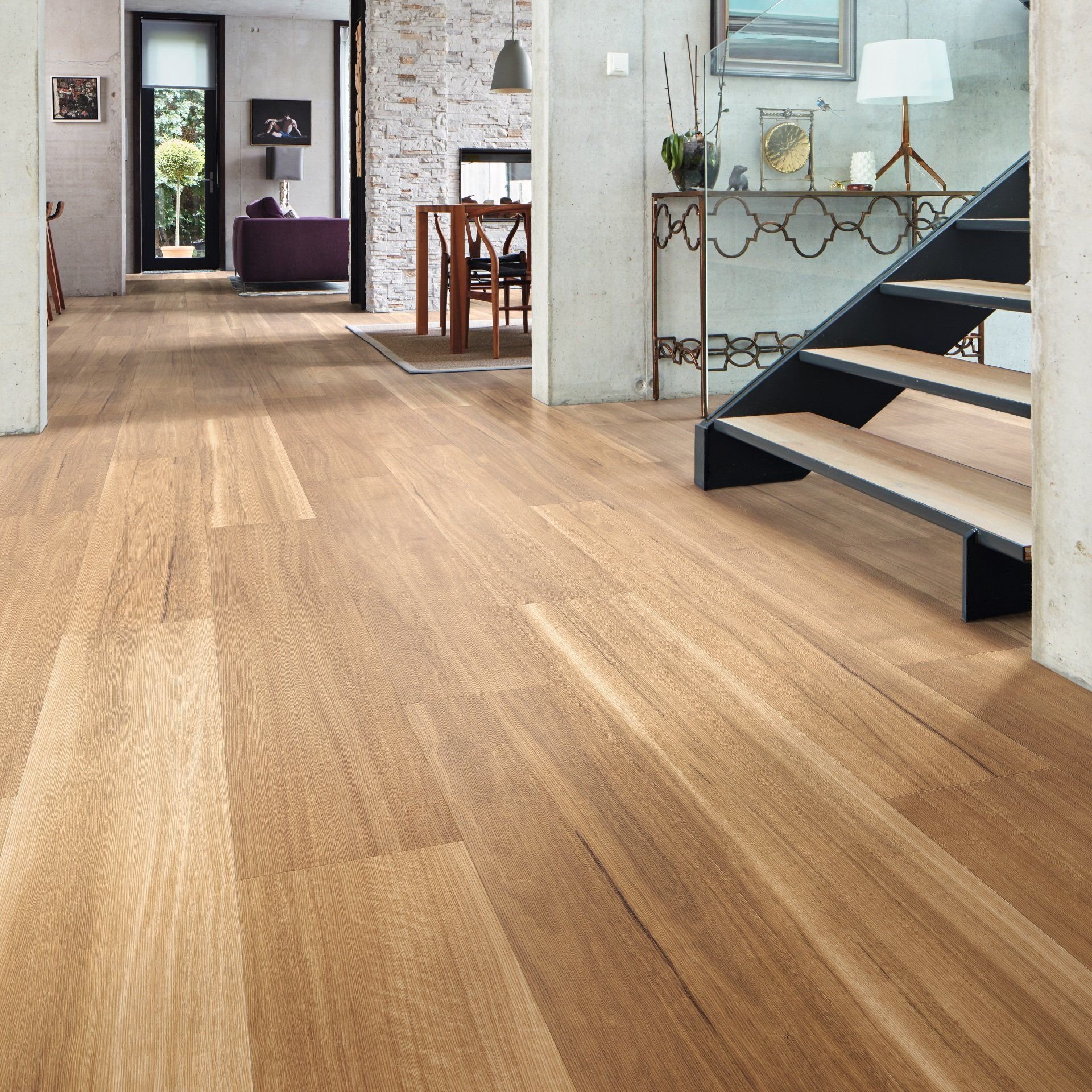
Laminate
Laminate flooring has gained immense popularity as a versatile and cost-effective flooring solution for both residential and commercial spaces. Known for its aesthetic appeal and durability, laminate flooring is a practical choice for homeowners and business owners seeking an attractive, low-maintenance alternative to traditional hardwood or stone flooring. This guide will cover essential aspects of laminate flooring, including its composition, advantages and disadvantages, the latest advances in water-resistant options, and maintenance guidelines.
What is Laminate Flooring and How is it Made?
Laminate flooring is composed of multiple layers that are fused together through a lamination process. Generally, it consists of the following layers:
Wear Layer: A clear, protective coating that resists scratches, stains, and fading.
Design Layer: A high-resolution image layer that replicates the appearance of natural materials such as wood, stone, or tile.
Core Layer: Made from high-density fibreboard (HDF) or medium-density fibreboard (MDF), this layer provides stability and strength.
Backing Layer: A moisture-resistant layer that helps to protect against warping and contributes to overall durability.
To create laminate flooring, the layers are assembled and then subjected to heat and pressure, resulting in a product that is extremely durable and visually appealing.
New Water-Resistant Laminate Flooring
Recent developments in laminate technology have led to the introduction of water-resistant options. This new range of laminate flooring is designed to withstand spills, humidity, and moisture, making it suitable for areas prone to wet conditions, such as kitchens, bathrooms, and laundry rooms. These water-resistant laminates feature high-performance cores and advanced sealing techniques, enhancing their performance and longevity compared to traditional laminate flooring.
Pros and Cons of Laminate Flooring
Pros:
Cost-Effective: Laminate flooring is generally less expensive than hardwood, tile, or stone, making it a budget-friendly option.
Variety of Styles: Available in various colours and designs, laminate can mimic other flooring materials, providing numerous aesthetic choices.
Durability: The wear layer protects against scratches and dents, making laminate suitable for high-traffic areas.
Easy Installation: Many laminate products feature a straightforward click-lock installation system, allowing for DIY projects.
Low Maintenance: Regular cleaning requires minimal effort, making laminate a convenient choice for busy households.
Cons:
Susceptible to Moisture: Traditional laminate flooring can be damaged by excessive moisture, although new water-resistant options help mitigate this issue.
Limited Lifespan: While durable, laminate floors may not last as long as solid hardwood flooring.
Noise: Laminate can be noisier underfoot compared to other flooring types, particularly if installed without an underlayment.
Not Sandable: Unlike hardwood, laminate cannot be refinished, leading to replacement when wear and tear become significant.
Cleaning and Maintenance Requirements
Maintaining laminate flooring is straightforward, requiring minimal effort to keep it looking its best. Here are some recommended cleaning and maintenance practices:
Regular Sweeping or Vacuuming: Use a soft-bristle broom or a vacuum cleaner with a hard floor attachment to remove dirt and debris.
Damp Mopping: Periodically damp mop the floor using a laminate-specific cleaner or a mild detergent mixed with water. Avoid using excessive water, as moisture can seep into seams and cause damage.
Immediate Spill Clean-Up: Wipe up spills promptly with a cloth to prevent moisture buildup.
Avoid Harsh Chemicals: Stay away from ammonia-based or abrasive cleaners that can damage the wear layer.
Use Area Rugs: Using rugs at entryways can help prevent dirt and debris from scratching the surface of the laminate.
Maintain Humidity Levels: Keep indoor humidity levels within the 35-65% range to avoid excessive swelling or shrinking of the laminate.
In conclusion, laminate flooring offers an attractive and practical flooring solution with many benefits. By understanding its features, advantages, and maintenance requirements, you can make an informed choice about incorporating laminate flooring into your home or business. Whether you opt for traditional or the latest water-resistant options, laminate flooring can meet your style and functional needs effectively.
